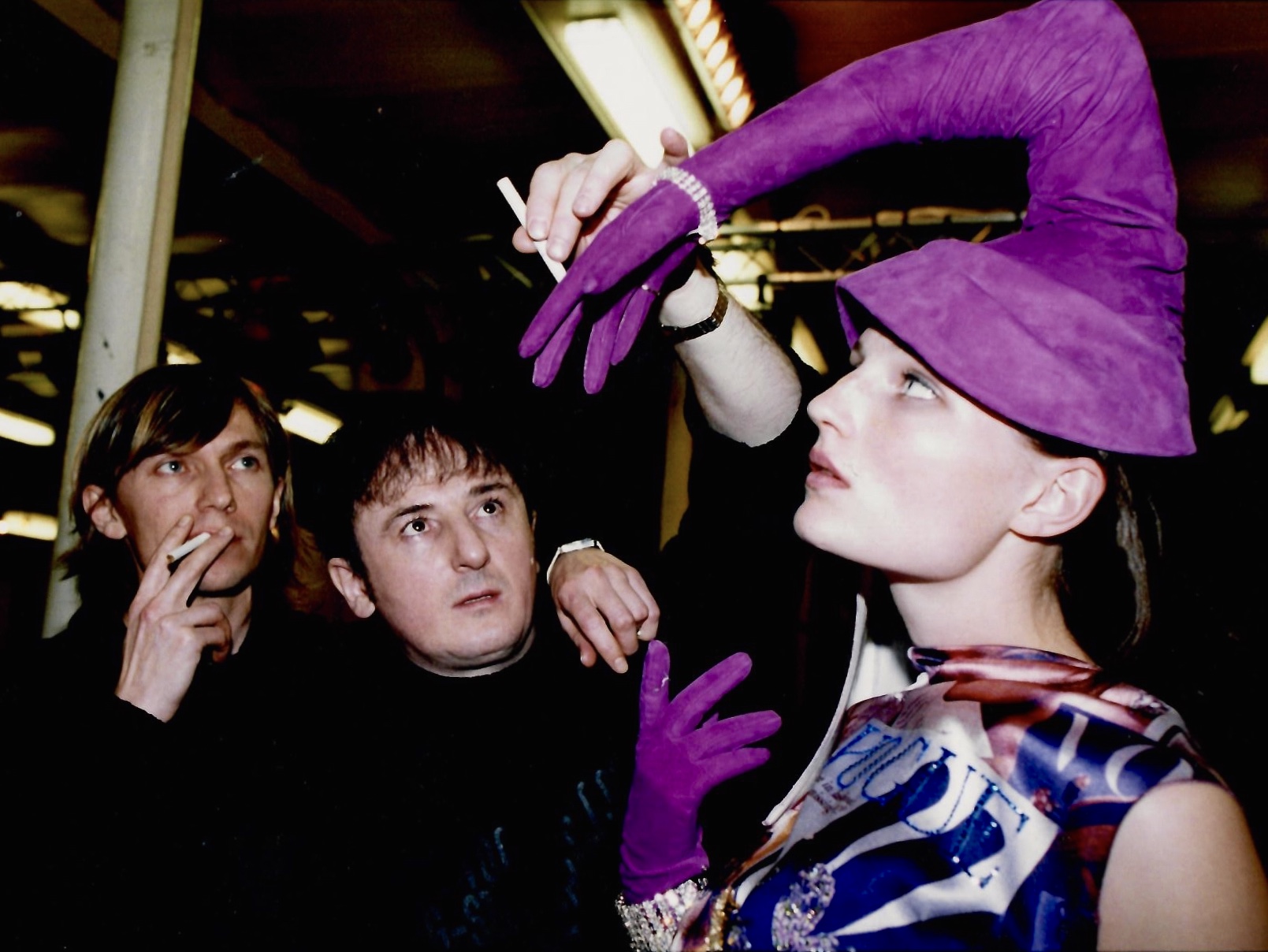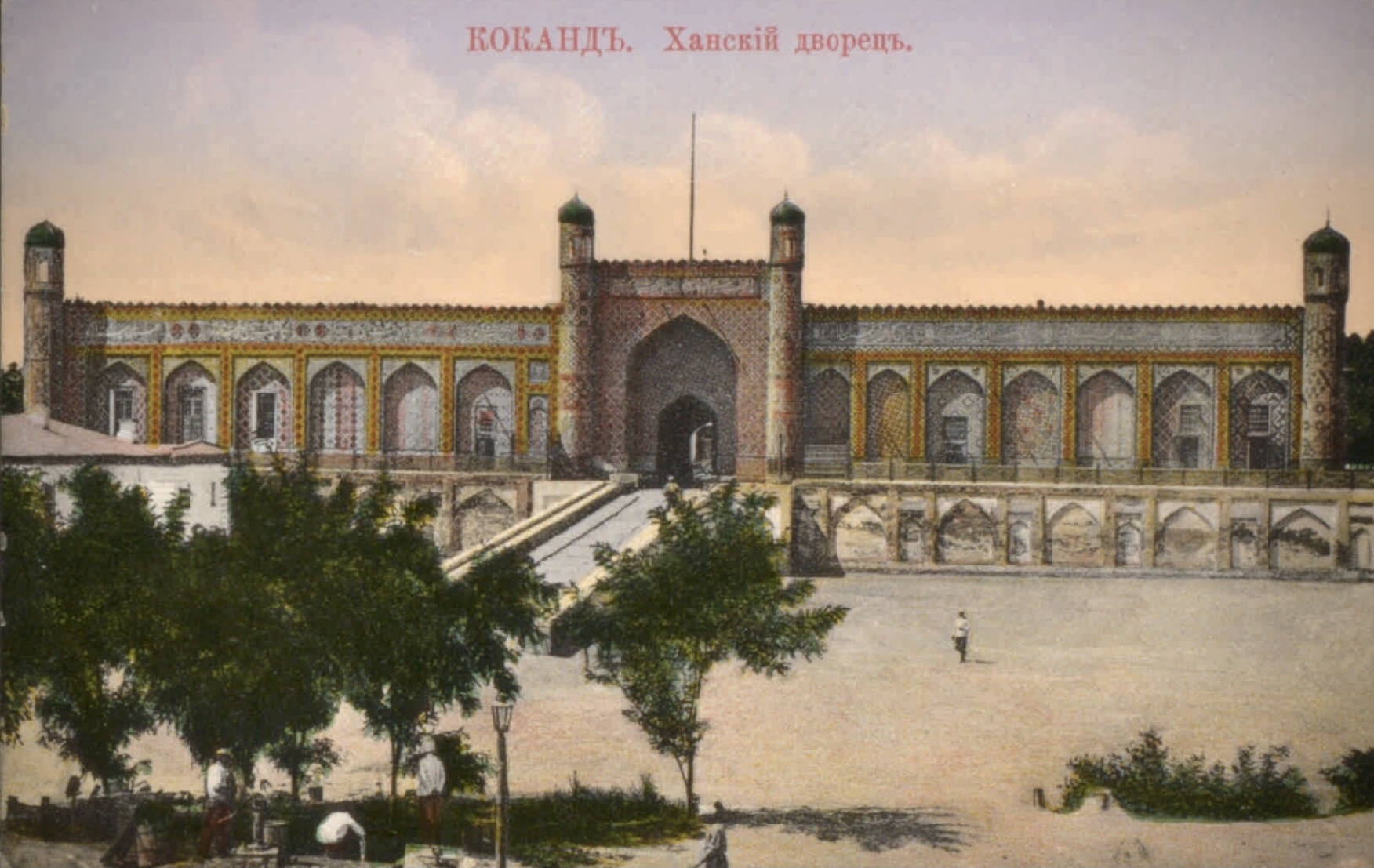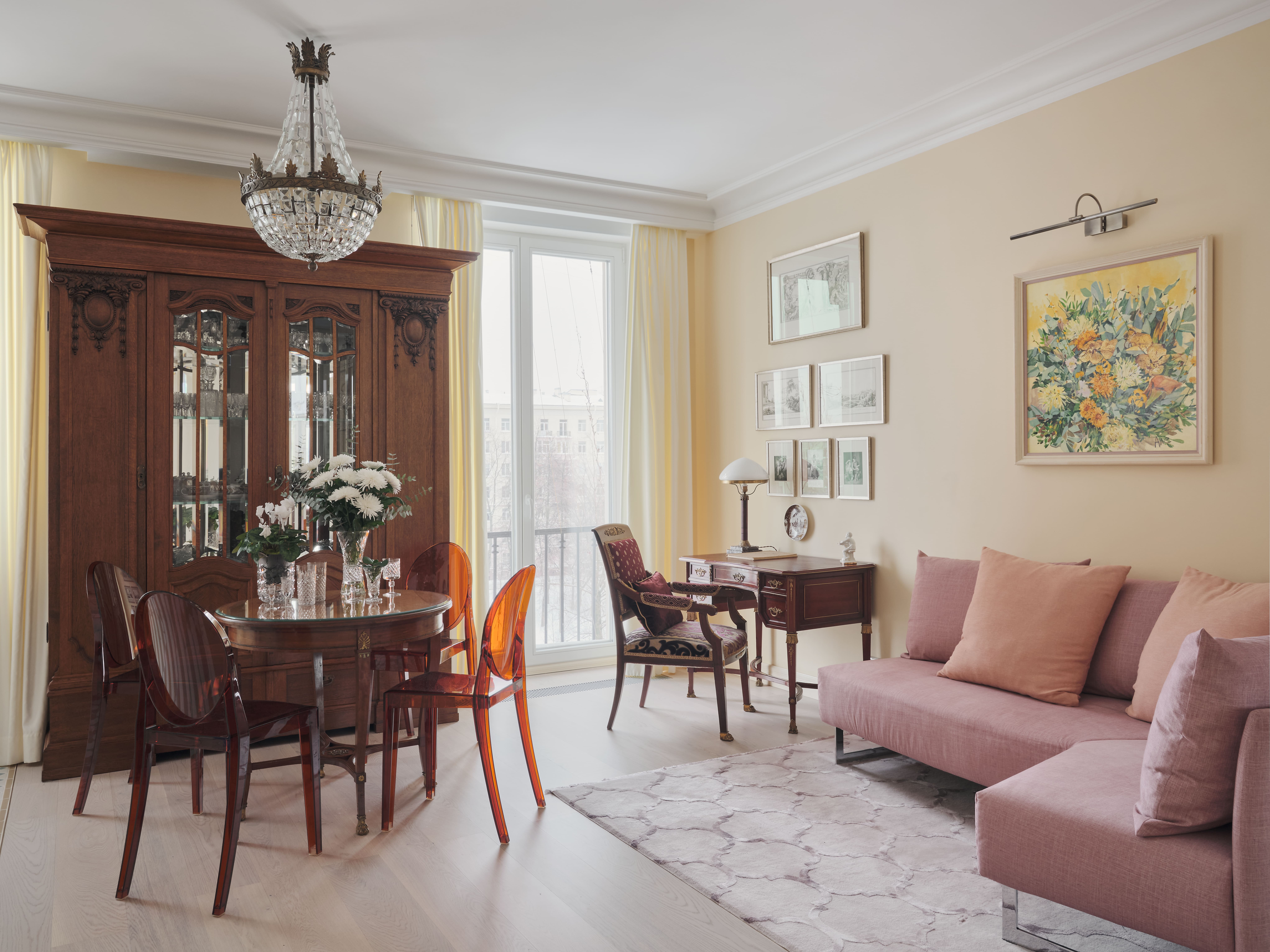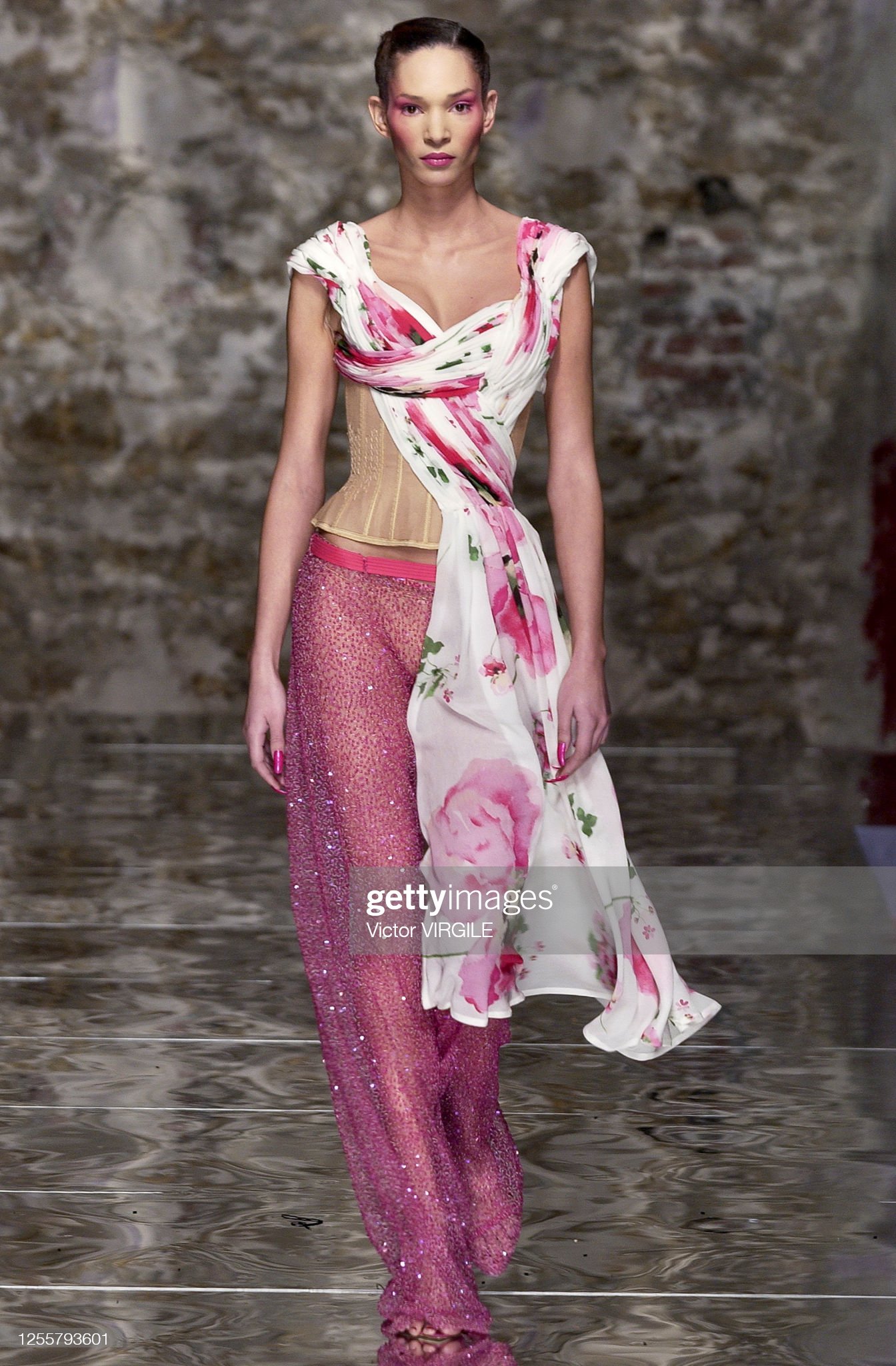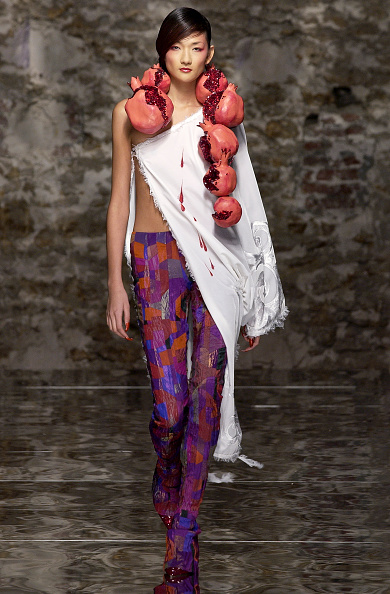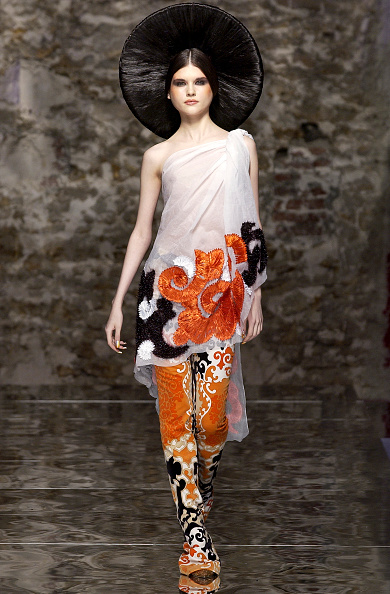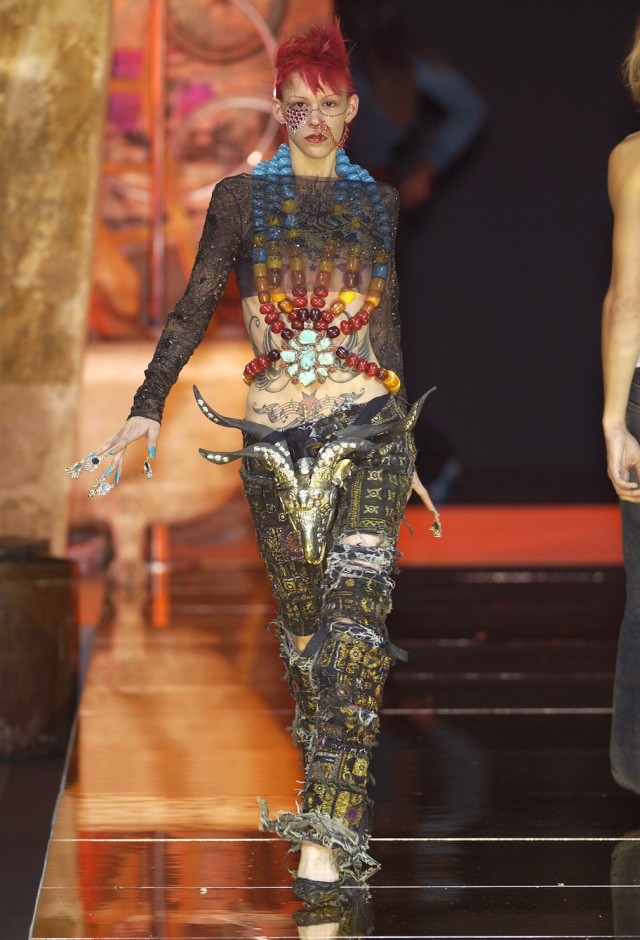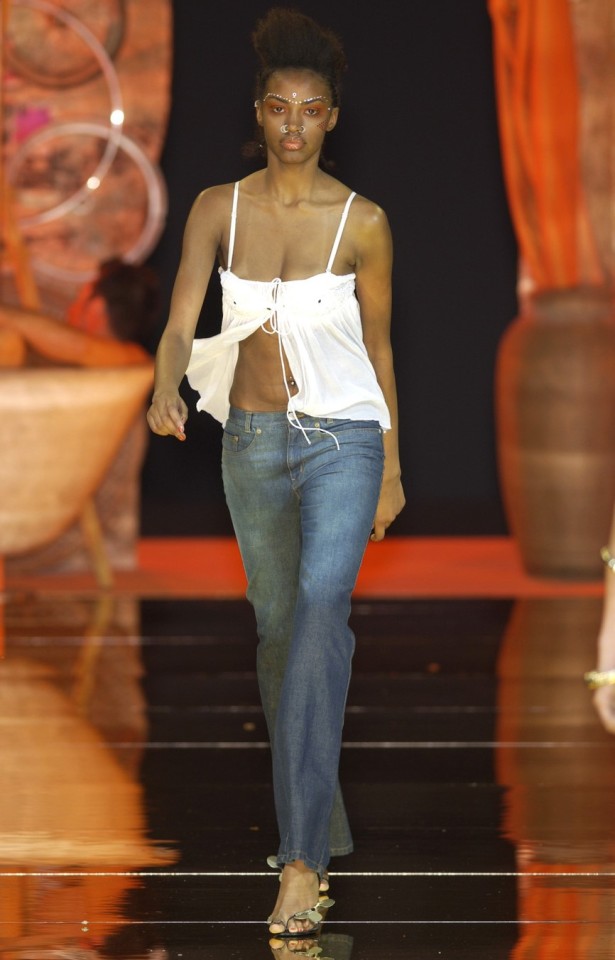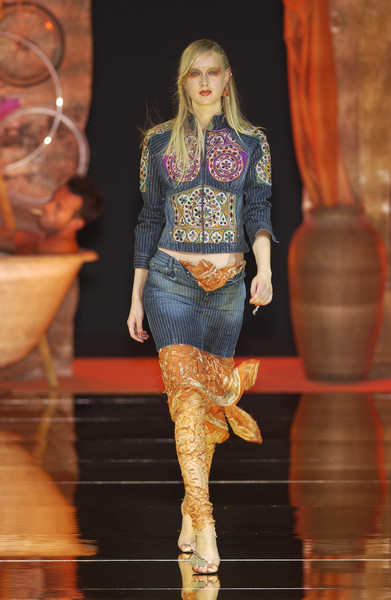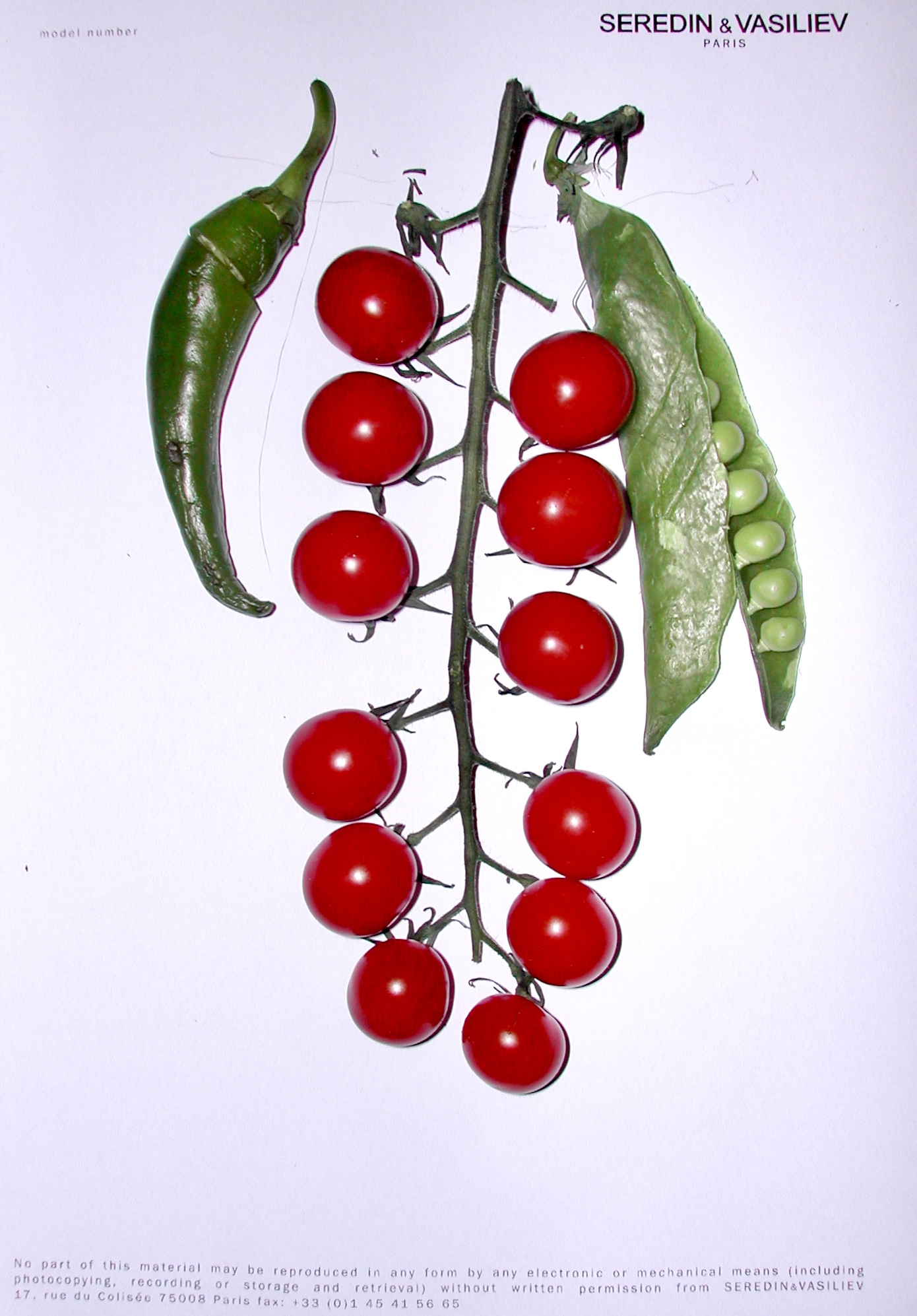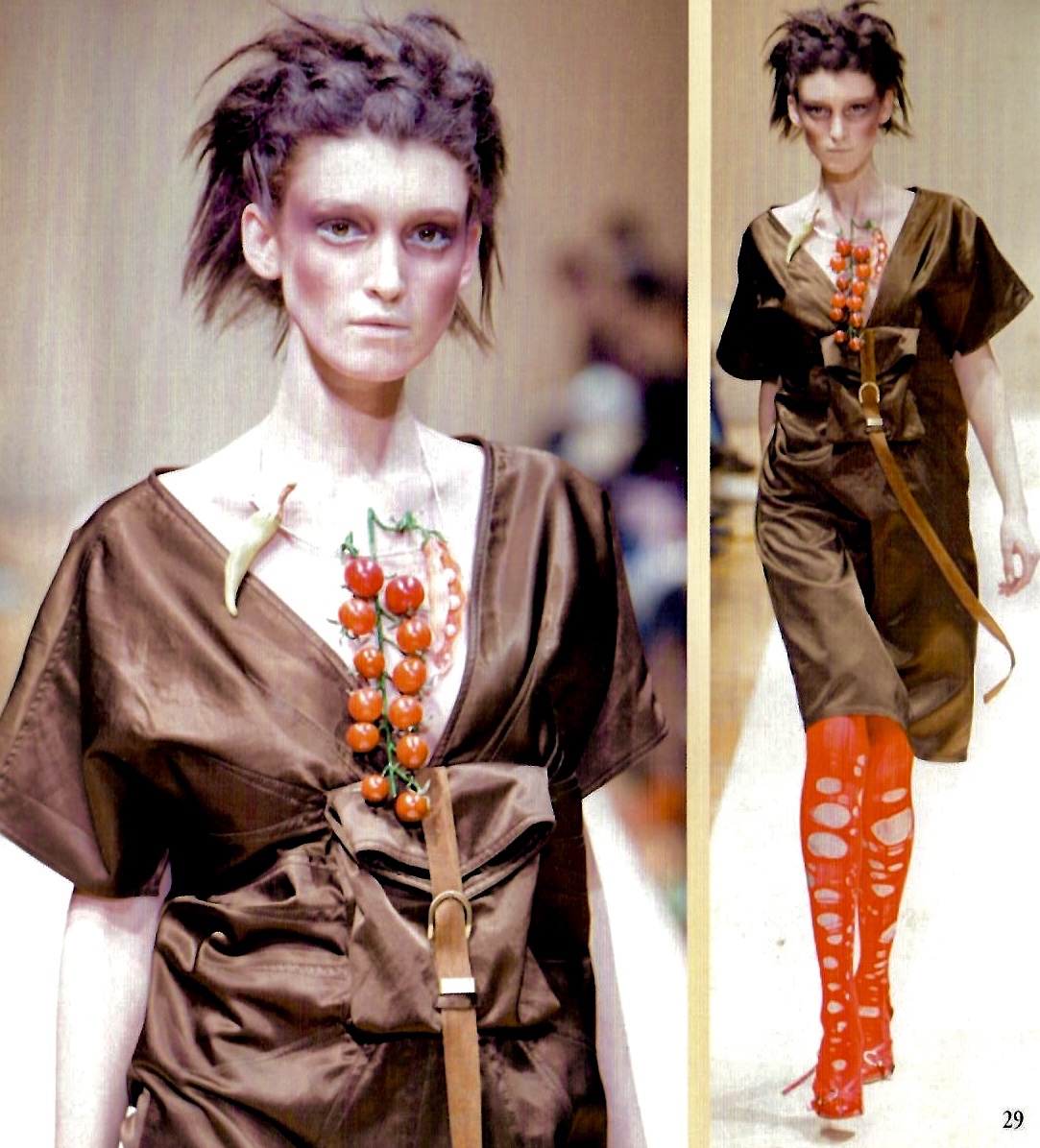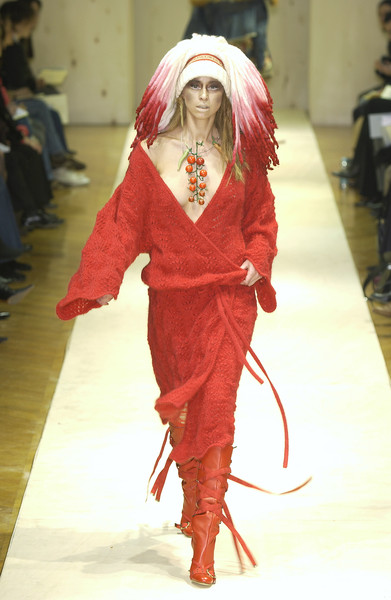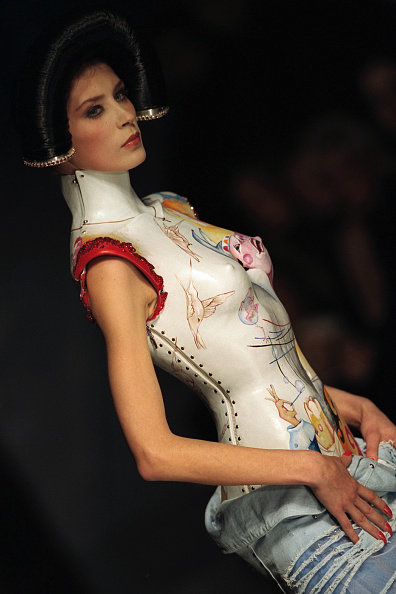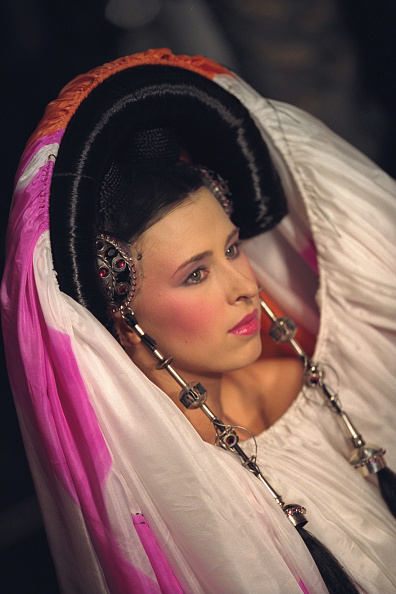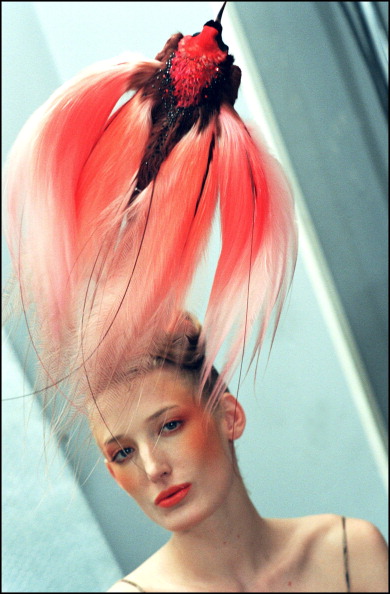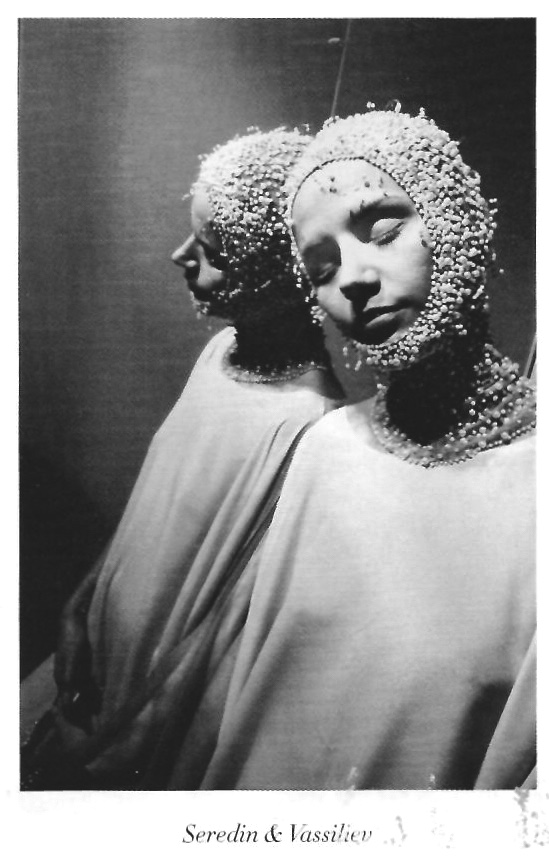

Sergey Vasiliev
It was a great chance for us to talk to Sergei Vasiliev, a living embodiment of diligence and sincere faith in art. Seredin & Vasiliev brand has turned perception of Russian fashion in Paris in the early 00s and thundered all over the world.
Tell us about your childhood, please. What was it like? Where were you born?
I was born in Kokand in Uzbekistan, one of the most famous cities in Central Asia. By various names, it has already been famous since the 10th century, but it blossomed in its associations with the 17th century. My ancestors moved there from Russia after 1917. My great grandmother Zinaida was the unspoken head of the family. At a young age she was great at cutting out and sewing clothes, she was a real professional.
Her neighbours often came to her to ask for her advice regarding textiles and choice of clothing designs, cuts and tailoring technology. There was an Orthodox Church there, where I was christened at the age of three at my grandmother’s insistence. I still remember the ceremony today.
My childhood was decorated by beautiful mansions in the modernist style, built in the centre of the city by Russian architects. There were ancient mosques on the neighbouring streets. Hidden in the shadowy garden with gigantic Maclura (‘Adam’s Apple’) trees, there was the mysterious Palace of Khudayar Khan that had become a local history museum. I often spent my time there! My childhood imagination was shaken by a deep hole where traitors were thrown to the lions, showcases with bulky women’s jewellery made of silver and corrals, a marble sculpture of hermaphrodites found in Rome and given to the Khan as a present in the 900s, poisonous snakes preserved in ethanol, bright festive dressing gowns made of colourful silk and openwork furniture.
There were two bazaars in Kokand: Green Bazaar and Big Bazaar in the old town. That’s where there was a riot of colours, a sea of fruit, greens and everything edible. Sellers of Uzbek flatbread would carry them around in big woven baskets on their heads, in the traditional way. Sometimes there you could meet a very old woman fully covered in a deep black hijab and even her eyes were covered by a black veil. With a bright bazaar as the background, these old ladies in black looked very mysterious. All these places, colours, nuances, personas were shaping the mind of the little boy Seryozha.
Do you remember at what age you realised you were interested in applied arts and design?
Already in nursery school when I was four, I created a bracelet and a necklace from a bright vinyl cover for a girl named Vika whom I liked.
I myself at that time was wearing a ring on my little finger made of a benzoic bead of Czech threaded onto an elastic band through a little hole. I couldn’t take my eyes away when the ring shone in the sun!
One day, I decided to lighten up one of the rooms in our house — I cut out long abstract lines from newspapers, which I then glued along the walls. When my mother and sister entered the room, I was standing in a pile of newspaper cutouts covered in glue, shining with happiness - the plastered walls were transformed, they had become prettier, I thought, but my parents didn’t agree, unfortunately.
Do you believe that talent is something inborn or one gains qualities as life goes along?
I am sure that we come into this world already with our baggage, our innate abilities and natural inclinations. It is not an easy task to find them, develop and multiply them with knowledge and practice. So, often, you meet people who unfortunately have not discovered their true selves and calling.
Please tell us how in the last 20 years your idea and perception of home has transformed and how it’s connected to your work in interior design?
I don’t want to sound banal, but for me my home is a place where I come to recharge my batteries, it is my fortress where I can hide from an overwhelmingly aggressive outside world. We are all different. And we have different ideas of what home and comfort is! Some are excited about the Ritz Hotel, and others think it is a relic of the past, like mothballs, and prefer the style of a Hyatt Hotel!
When you move and travel a lot around the world, living in different countries and cities, gradually you get tired of new places and the emotional overload. A moment comes when you just want to go back home and live in the quiet, intimate atmosphere of home. But some time passes and you are again excited to go somewhere, to change the scenery - it’s like a never-ending cycle!
Working on interior design projects, it is important for me to get my customer, their habits, dreams, wishes, to try to look through their eyes at the future space! It is not easy, but possible.
Haute couture is built on a constant stream of consciousness, imagination, that in many ways is built on childhood memories or feelings and sensations that settled in people’s minds at an age when they were not conscious. Do you think your child self had a great impact on your haute couture projects?
I completely agree with you, childhood and adolescence sensations are the brightest and strongest ones! Often they become a basis for unexpected concepts and designs!
When you take an empty piece of paper and a pencil, your subconscious starts working, as well as some cosmic receptors and something really mysterious happens - you can see on paper the fruits of your imagination with shapes and images that only you can understand. Then a process begins of materialisation of your ideas, cuts, fittings, decorations, involving other people and specialists in the process.
But everything you create is your individual product and it possibly started incubating long before you were born!
What is your attitude to Russian sewing traditions? Have you ever used it in your practice?
I really respect and admire Russian sewing traditions! I have always used and still carry on using precisely Russian heritage while creating designs and images. It is a shame that the tragic history of Russia interrupted the succession of generations and moved people away from addressing their roots. Only a few specialists know the name of Nadezhda Lamanova! She had an amazing life as a fashion genius. The whole world knew her, all of pre-revolutionary Russia!
What do contemporary designers think of Slava Zaytsev’s creations?
They don’t really think anything about him, they consider him a character from the past, even though Slava created a dynamic evolution in Russian fashion! During his long creative life he made an unthinkable number of delightful sketches, designs and photographs! All this deserves to be researched, used, transformed and rethought and to be proud of.
Did you study fashion?
For a creative mind, the whole of life is a non-stop school! If you stop growing, that’s it, time to rest.
Behind me is art school, a technological institute with a department of clothing modelling, but I consider the theatre library in Moscow to be my main Fashion school, where fashion magazines from all over the world have been collected over the past 100 years! There, I learned all the great names from the world of fashion, studied the existing styles, the subtleties of proportions and cut. No one in the Soviet institute taught or talked about anything like that.
Do you think there is such a thing as a Russian fashion school (as a phenomenon, not just a school) and, if so, where and what are its influences?
Such a school is just starting to emerge and therefore it is not in a condition to influence anything at the moment. Same with the fashion industry in Russia! There is no demand for professional designers, there are no modern sewing factories, no schools for tailors, no textile factories, nor knowledgeable sellers. There are many questions and no answers. It is impossible to create an industry by an impromptu governmental decision. Decades of development strictly according to a programme are needed!
Do you have any favourite designers?
Yes, my favourite designers and idols are Nadezhda Lamanova and Gianfranco Ferré, who was ahead of his time.
What did Seredin & Vasilyev give Europe in the 2000s?
I guess we designers are too egotistical, but we did not plan to give anything, even to Europe! Self-realisation, appreciation of our work from the specialist media, career perspectives - those were our dreams and plans.
Almost all the fashion world, not only the media, were writing about us and our runaway shows, but we always understood that that was a result of our all-day and year-round work in the studio, the work of a great number of people in Russia, Italy and France, and also thanks to Lady Luck!
In Europe they thought we were the richest people supported by the government with a great number of staff members and mobile manufacturing! Otherwise, how else could we create such intricate haute-couture collections with sophisticated embroidery, luxurious fur, expensive textiles, etc. But, in fact, we managed to simultaneously deliver to our loyal customers in Moscow, and that was our main income. The rest of the time we dedicated to creating seasonal collections! Later, we started generating collections for European labels working as guest designers. But we never received any support from our government, there is no such tradition in modern Russia! In England, Holland and Italy, designers who are famous outside of their own countries are considered to be national heroes, representing the culture and traditions of their Motherland!
Please give us a portrait of a client of Seredin & Vasilyev fashion house in the 2000s? Who was this person?
If we speak about the clients of our studio where we created and implemented designs for individuals, then those were young, successful men and women who had succeeded in their careers but had not yet found their image and style. Usually, if somebody ordered something from us once, this person became our client. Because, apart from meticulous cuts and high quality manufacturing, we were creating not only one piece of clothing, but whole sets with shoes and accessories.
If we talk about our clients in our pret-a-porter collections, then it is a confident young woman - young not by the digits in her passport, but by her lifestyle and worldview! A woman who loves to be the centre of attention, elegant, appreciative of comfort, but consciously choosing unique, intellectual clothing for herself.
How did you split your time between your work in LVMH and your own brand? Why didn’t you want to simply join a big brand and work for money?
Indeed we did collaborate with the above-mentioned conglomerate, but it was mostly sponsored exhibitions and one-off campaigns. We would have been happy to leave to a big brand, but LVMH never offered it!
Other companies offered, there were some negotiations sometimes and we even worked for one French brand for five years and went to India twice a year, where the company’s factories were located.
What are your concerns in the creative process? The manufacturing? What things do you shield yourself from?
The creative process is a very pleasurable mystery! If there is a team of professionals working with you and everyone works on their part competently, then work becomes a pleasure and the results are great. I try to shield myself from working with unprofessional people. They consume a lot of energy and they produce just average results.
How do you usually start working on your projects? How do you enter a routine working process?
Traditionally, I start work from a blank page! Every time there is a new story, new image, new tasks and goals. Every stage is important and that is why it is interesting for me. In my work I never have a routine, I am not familiar with this word. At every stage of the project the process should take your breath away and you should be looking forward to a beautiful finale.
With whom or where would you like to work?
My long-time dream is to become an art director for an age-old fashion house! Just the thought of me breathing life into something tremendous, high, born in a different epoch, melts my heart and inspires me!
What is your stance on an esoteric understanding of cycles? Which things have come back to us?
There is indeed such a concept as cycles in fashion, coming back to already established clothing styles and modes of fashion. It is valuable when contemporary designers do not just blindly copy retro clothing, but transform it through a modern vision - and this is exactly what moving and developing is.
Today we are living through unique times when there is not only one fashion and style dictate, one pattern of fashionable colours, clothing proportions - you can wear anything and no one will say that you are behind the times! For advanced intellectuals, it is important today to stand as an individual, wear what suits and fits you and you only! And for those ‘statistics’ fused with their gadgets, the only trend is always tracksuit trousers and oversized hoodies.
What is the role of material things in your life? Or are you ready to give everything up for something spiritual/intangible?
I am a material person. I love beautiful objects, furniture, accessories and historical decorative elements. They fulfil and inspire me. From one little engraving, a whole big clothing collection can be born!
I think that extremes are always unnecessary! You need a golden mean, a middle ground. You can be a sophisticated appreciator of beauty, a collector and be a spiritual person at the same time!
Would you work with fragrances?
We have a bit of experience with perfumers — we had negotiations with french specialists, but it was a big and labour-consuming project that needed massive investments. Unfortunately, we were not able to bring it to life.
Which design mediums attract you apart from clothes and interior design?
In my life now I’ve got a lot of interests! Restoration, for example — I can sit night and day bringing an old object back to life! I feel inspired landscaping the garden, and the most interesting thing in this process is time! The garden starts gaining strength, but becomes prettier only after at least ten years.
If you could start your career once again, what would you do? (Not necessarily in design).
I’ll answer without thinking — Fashion Designer!
What do you think would help to make a drastic change to the fashion world in the near future?
In this issue I am a pessimist! Fashion is created for people. Their lifestyle, standard of life, intellectual dimensions, and other many economical and political aspects shape the market and its products. In my opinion, there is no positive prognosis for the next few years.
Will there be a moment for drastic changes at some point, or is tomorrow already here today?
We can philosophise ceaselessly on the subject of the ephemeral ‘tomorrow’, I personally prefer the day that is already here! Today, you should be happy, fashionable, sporty, spiritual, aiming for your own goals and stars!
Your favourite book?
My favourite book is Two Lives by Concordia Antarova. It is not a simple one and cannot be classified by one genre. I read it in one sitting and still reread it from time to time.
Are you a fan of poetry?
I love poetry. Every poet has got its unique vision, like an artist, except words instead of brushes!
In my childhood, before going to sleep, I was read Pushkin’s fairy tales. In my head was emerging a rich set of visuals, images and characters! A talking cat scientist, a mermaid sitting in the branches, a goblin, a shiny gold chain!
Who in the arts would you define as absolute geniuses?
In fashion, I would say Nadezhda Lamanova, Gabrielle Chanel, Elsa Schiaparelli and Gianfranco Ferré.
In ballet, the producer Sergei Diaghilev and the dancer Rudolf Nureyev.
In opera, Maria Callas and the fantastic Elena Obraztsova.
In painting, Mikhail Vrubel, Konstantin Korovin and his fellow student Alexandr Golovin.
In architecture, Fyodor Schechtel.
In cinema, artists/directors Jean Cocteau and Rustam Khamdamov.
In acting, glorious Lyudmila Gurchenko.
With the arrival of social media and other modern communication tools, the rules of the game have changed a lot. Not a single industry has been left untouched. Tell us, how do you see these changes and have you adapted to them?
I see a lot of pluses and minuses in what has happened. We could discuss it for a long time, get into a debate, but it won’t stop progress, everything is moving and changing. Based on the prognosis, humanity should skyrocket in its development, however we can see the opposite now.
I personally try not to spend too much time on social media. I spend only a strict amount of time, otherwise you can stay there for several days sinking into this unlimited virtual world. But there are so many plans in reality, I want to have enough time to do it all!
What do you think about cancelling appropriation culture? Do you think there was appropriation in your works as well?
I think that the world is going mad! They see tricks, hidden meanings, evil thoughts everywhere… But fashion works have always been multicultural! Of course, some scandals happened. But what’s happening now is being cultivated on purpose to move people’s attention from real problems and important life tasks. To create a scandal out of nothing - well-educated psychologists work on this!
I believe that designer and brand staff have a right to decide which models to invite for a show, which prints and logos to use, when and how to run a show, with which music, etc. Otherwise it’s easy to quibble and find a provocation in absolutely anything! This way, we can call Gauguin a racist and Picasso a nationalist!
I’d like to ask, “Who are the judges?” I hope that common sense will soon prevail!
What have you dreamt of and not yet implemented?
I dream of spending the next ten years of my life in fashion design, creating new and life-affirming collections!
Translation by Yana Malysheva-Jones and Ben Jones
